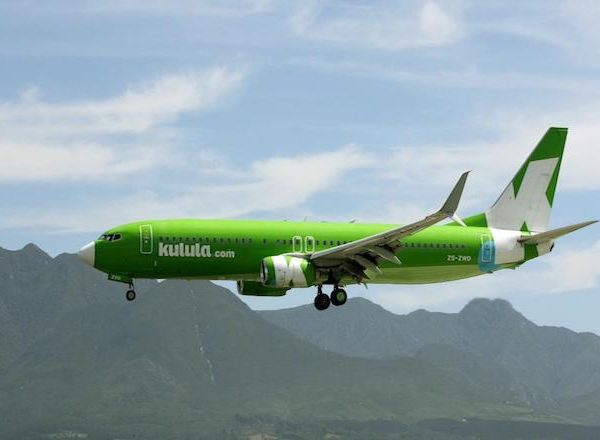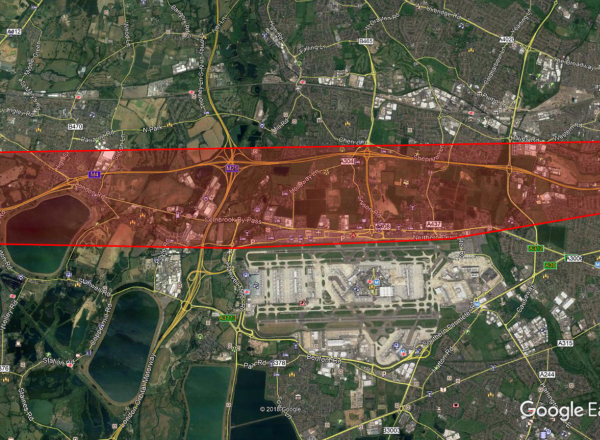The International Civil Aviation Organisation (ICAO) hosted a symposium on December 8-10, 2021, as a consultation with regard to their proposed new Obstacle Limitation Surfaces (OLS), which can be found in Chapter 4 of ICAO Annex 14. An overview of the current OLS in the UK can be found here. The plan, which is still in the consultation phase and thus subject to further revisions, is that effective from 2024 and with applicability from 2026, the OLS is to be reformed and replaced with Obstacle Free Surfaces (OFS) and Obstacle Evaluation Surfaces (OES).
Why Are The Surfaces Being Introduced?
The present Obstacle Limitation Surfaces date back to the 1950s. At that time, aircraft were less powerful, there was much less in the way of urban development around airports, and environmental considerations were all but non-existent. Nowadays, aircraft are more efficient and can climb faster and higher than before. Furthermore, there is a much greater desire for sustainable urban development and with these things in mind, the obstacle limitation surfaces seem rather restrictive.
The OLS also have the problem that they are often infringed by existing development or landscape and can thus feel unfair to developers. Manchester airport, for example, has its current Outer Horizontal Surface (OHS) breached by the Pennines. Furthermore, they lack consistency with other surfaces such as instrument flight procedures or other ICAO annexes.
The new surfaces seek a better and fairer balance between new development and aviation safety by ensuring that everywhere that needs to be protected is protected, whilst ensuring that new development is facilitated where it is safe. They have been developed by the ICAO’s New OLS Task Force, who have meticulously examined real-world data of aeroplanes taking off and landing at aerodromes worldwide, and decided on dimensions that fit these data.
Note all images shown below pertaining to the new OLS for Stansted Airport are for illustrative purposes only and subject to change through the consultation process.
What Are These Surfaces?
The Obstacle Free Surfaces (OFS) will consist of six surfaces.
Three of the existing Obstacle Limitation Surfaces will look quite similar but with some changes to the dimensions. The surfaces will consist of the following:
- Take-off Climb Surface (TOCS)
- Approach Surface (APPS)
- Transitional Surface (TS)
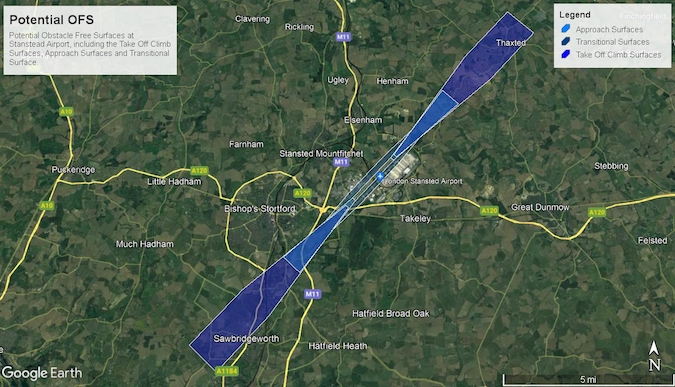 Figure 1: Illustrative new Take-Off Climb, Approach and Transitional Surfaces – Stansted Airport Satellite Imagery Copyright 2022 Google.
Figure 1: Illustrative new Take-Off Climb, Approach and Transitional Surfaces – Stansted Airport Satellite Imagery Copyright 2022 Google.
The Obstacle Free Zone (OFZ) surfaces will be kept exactly the same as beforehand. These surfaces are as follows:
- Inner Transitional Surface
- Inner Approach Surface
- Balked Landing
The Obstacle Evaluation Surfaces (OES) will consist of four surfaces. These are as follows:
- The Horizontal Surface, which will somewhat resemble the current Inner Horizontal Surface but with different dimensions.
- The Instrument Departure Surface, which will resemble the current departure surfaces for Omnidirectional Instrument Departures.
- The Surface for Straight-in Instrument Approaches (SSIA), a large rectangle about the size of the current Inner Horizontal Surface (IHS).
- The Surface for Precision Approaches, which will resemble the final approach and missed approach of a precision instrument procedure, with transitional surfaces attached to form a rectangle.
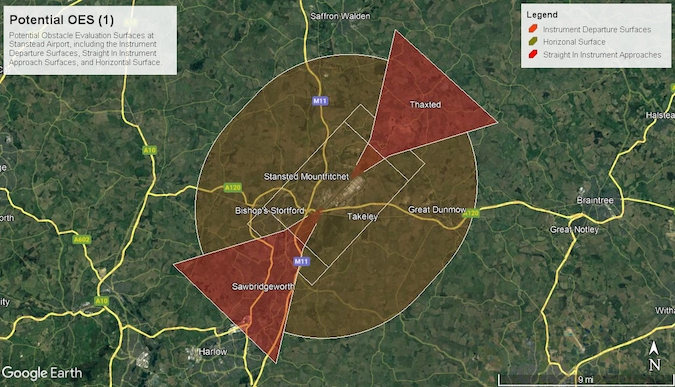 Figure 2: Illustrative new Horizontal. Instrument Departure and SSIA – Stansted Airport – Satellite Imagery Copyright 2022 Google.
Figure 2: Illustrative new Horizontal. Instrument Departure and SSIA – Stansted Airport – Satellite Imagery Copyright 2022 Google.
Proposed new developments can almost never allowed to breach the OFS. The OFS in the vast majority of cases will be either as conservative or slightly less conservative than before, with only a small minority of existing allowed structures now breaching. The OES is slightly different in the sense that it triggers an aeronautical study, likely by the Civil Aviation Authority in the case of developments in the UK. Structures could still be allowed to be built even if they breach it. There is also going to be greater scope for aerodromes to modify the OES to fit their requirements relating to their specific instrument flight procedures.
For both OFS and OES, surface dimensions will no longer be based on the runway code number (which is essentially a classification of runway length). Instead, they will be based on an aeroplane design group, which is based on the wingspan of the planes using the specific runway, and the indicated airspeed at the threshold.
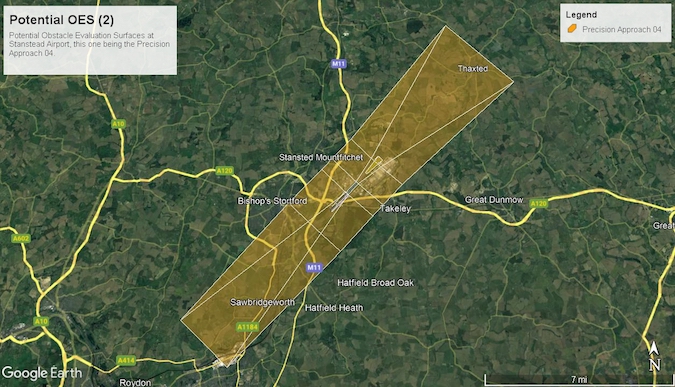 Figure 3: Illustrative new Precision Approach Surface – Stansted Airport Runway 04 – Satellite Imagery Copyright 2022 Google.
Figure 3: Illustrative new Precision Approach Surface – Stansted Airport Runway 04 – Satellite Imagery Copyright 2022 Google.
How Does This Affect Me?
In the vast majority of cases, the new surfaces are less stringent, and so existing developments which currently do not infringe OLS are unlikely to suddenly cause a problem. The new surfaces will be effective from 2024 and Pager Power is already working to ensure that they will be able to assess the new surfaces, whilst continuing to provide expert guidance on the current surfaces.
About Pager Power
Pager Power has been undertaking technical assessments and providing advice pertaining to aviation interests since the early 2000s. For more information about what we do, please get in touch.
Thumbnail image accreditation: Josue Isai Ramos Figueroa (March 2018) on Unsplash.com. Last accessed 7th February 2022. Available at: https://unsplash.com/photos/n2NBgIx3A28

